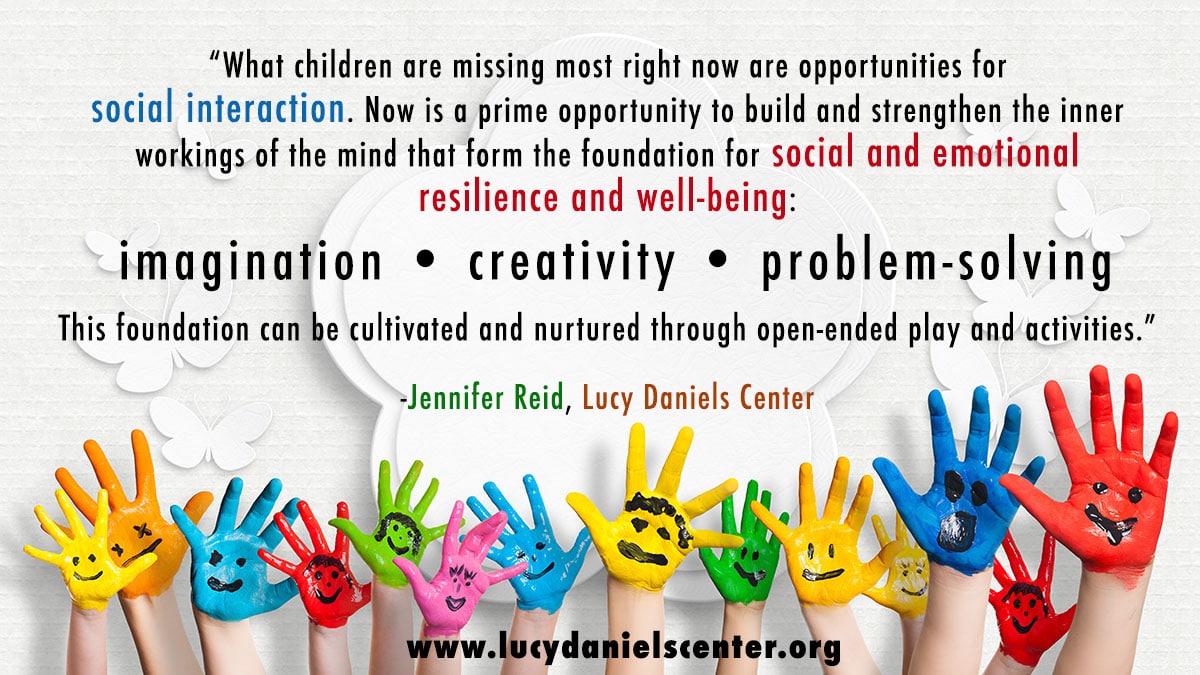Mental Health Mondays:
Balancing Schoolwork and Downtime
by: Jennifer Reid
Early School Director/In-School Therapeutic Services Coordinator
Lucy Daniels Center
Many parents are currently feeling the pressure of educating their children and are left wondering just how much they should be teaching. For most families, the parent-child dynamic does not easily switch over to or blend with a teacher-student relationship. Is it more important right now that children are completing their remote assignments, or can our focus be somewhere else?
First, it’s helpful to know that even though most elementary school children go to school for six to seven hours each day, they are not spending that amount of time on academic tasks. Consider how much time the following takes on a given school day: transitions, lining up, unpacking and packing belongings, snack time, lunch time, recess times, specials such as PE, art, and music, and bathroom breaks. The actual pencil-to-paper time on an average school day probably amounts to no more than half of the time spent in school. So, if all of your child’s at-home schoolwork is completed in the morning hours, you’re doing more than enough.
Second, what children are missing most right now are opportunities for social interaction. Since social interactions are limited to sibling relationships (if any) and virtual connections, now is a prime opportunity to build and strengthen the inner workings of the mind that form the foundation for social and emotional resilience and well-being: imagination, creativity, and problem-solving. This foundation can be cultivated and nurtured through open-ended play and activities.
Make unstructured playtime a part of everyday. This is a time away from screens when children are creating and problem-solving. For young children, this can be achieved with toys such as Lego or other building materials, puzzles, dolls/figures, or vehicles. Encourage long-term projects that they return to each day. For older children, activities include reading, journaling, story writing, poetry, learning an instrument, drawing or painting, redecorating a space or room, cooking, and gardening.
Encourage expression and creativity. Have a space dedicated to art materials that are available all day. Create a tote or basket that makes it easy to take supplies outside for inspiration from nature. Give your child a journal or sketchbook that can be carried around. Build a fort or special garden spot outside. Listen to all kinds of music. Read together. Encourage reading in different spots each day: in the grass, in a tree, or in a cozy reading nook.
Perhaps these new habits and routines will inspire more creativity in our children, and when they return to their peer groups, their collective imagination will impact how we think about teaching and learning as a society. Happy creating!
Want to read more? Check out these words of wisdom from the classic program, Sesame Street: https://www.theguardian.com/…/sesame-street-coronavirus-adv…
Lucy Daniels Center is currently operating via telehealth services due to Covid-19. If you would like to request a consultation with a mental health clinician, please click here:https://tinyurl.com/slx79fe

